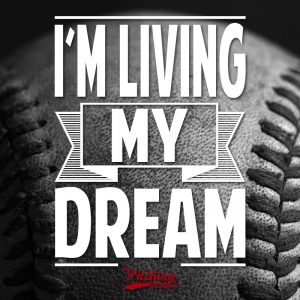Many people wonder how Major League pitchers throw a ball and make it look so effortless. There is an art and science to throwing a baseball and, once learned, it becomes simple to do. As with any biomechanical process in any sport it takes time to develop proper pitching or throwing mechanics. Most people who want to learn how to pitch a baseball don’t put in the hard work that it requires to master the art of throwing a baseball.
 Pitching requires the appropriate movements of your entire body, in the correct sequence, to maximize velocity and control of the ball. It also requires proper pitching mechanics so that a pitcher decreases the risk of arm injury. Pitching is a feet to fingertip exercise, meaning the energy is transferred first from you feet all the way to (release of the baseball) your fingertips. When a pitcher uses his body correctly using proper weight transfer and ensures his energy is going toward home plate he will be able to pitch a baseball with more power and accuracy.
Pitching requires the appropriate movements of your entire body, in the correct sequence, to maximize velocity and control of the ball. It also requires proper pitching mechanics so that a pitcher decreases the risk of arm injury. Pitching is a feet to fingertip exercise, meaning the energy is transferred first from you feet all the way to (release of the baseball) your fingertips. When a pitcher uses his body correctly using proper weight transfer and ensures his energy is going toward home plate he will be able to pitch a baseball with more power and accuracy.
Pitching a Baseball Using Legs And Hips:
Momentum: A long stride creates momentum which translates to velocity. You won’t see major league pitchers throwing 90 plus MPH with a short stride. So how long should your stride be? Well, as far as you can possibly make it maintaining your balance toward home plate. Here is a pitching video that explains more about stride length.
Hip Rotation: Just before your landing leg hits the ground (foot strike) you point your foot more toward the catcher to help open up your hips. Your hips will open up and start rotating before your upper body does. This is referred to by many pitching coaches as delayed shoulder rotation. Your hips then trigger your core sending energy through your upper body eventually to release of the baseball. Just remember hips go first before the rotation of your shoulders.
For a more comprehensive step-by-step approach to learning how to pitch a baseball we would suggest visiting this site!

